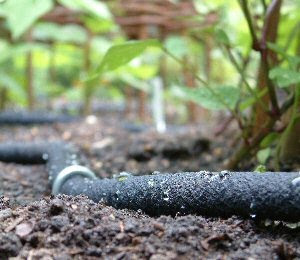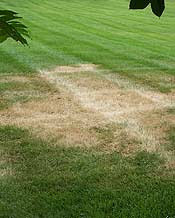
Wondering what to do with the cans of unneeded paint or your stash of old batteries taking up space in your house and garage? You know you shouldn't throw them out, but it really is time to get rid of them. Resist the temptation to toss them in the trash anyway. The reason: They (and everything on the list below) contain toxic chemicals capable of contaminating the environment if not disposed of properly.
Unlike items that are picked up at the curb, you'll have to make a special effort to unload these ones responsibly. But, with a little advance planning and some good info, you'll see that it's really quite simple to dispose of these seemingly mysterious items. Here's how:
* Batteries. Recycling rechargeable batteries is fairly easy. Home Depot, Staples, Radio Shack, Best Buy, and other retailers take them back free of charge. There are fewer options for single-use batteries, but look for bins at your local Whole Foods Market, Ikea, or library. Otherwise, your best bet is the local household hazardous waste drop-off site. Where is it and what are your closest drop-off options?
* CFLs. These energy-efficient bulbs are becoming easier to get rid of. Just drop old bulbs off at any Home Depot or Ikea for free recycling. Or ask about CFL recycling at your local Ace Hardware or home improvement store. You can search locally for other nearby solutions.
* Electronics. Every retailer that takes back rechargeable batteries also accepts mobile phones, as do most wireless providers. For computers, cameras, televisions and others, it's worthwhile to do a little homework because some stores charge fees depending on item and brand. Check out Best Buy, Staples, and Office Depot to see what's the best fit. Some places, like Radio Shack, have trade-in programs where you can receive store credit for your old gadgets.
* Motor Oil. In case you need some motivation, consider this: Every gallon of used motor oil that's improperly disposed of can contaminate one million gallons of drinking water. Bring it to Wal-Mart, Autozone, Jiffy Lube, or search online for more convenient choices.
* Paint. It's among the harder items in this group to dispose of, but it's worth it and totally doable. Remember, with proper planning and application, paint disposal is usually unnecessary. Buy the right amount for your project. Apply a second coat and touch up areas that need improvement. If the paint is still in good shape, consider donating it. Liquid wastes are restricted from municipal solid waste landfills – never throw away leftover liquid paints in your trash. The National Paint and Coatings Association suggests:
Latex Paint Disposal Steps
1. Unused latex paint should be poured into an absorbent material such as a cat box filler, shredded newspaper or sawdust.
2. Let it dry completely and dispose of the dried material in your regular trash.
3. In areas where recycling programs exist, save the dry, empty containers with the lids off for a steel can recycling program. Small amounts of dried residue will not hinder steel can recycling.
4. Wash your paint brushes and painting tools in the sink. Never clean your paint brushes near a storm sewer drain.
Solvent-Based Paint Disposal
Solvent-based or alkyd paints require special disposal practices. Solvent-based paints are ignitable and present particular hazards. These products should not be emptied into storm sewers, household drains (especially if you have a septic tank) or on the ground.
Disposal Steps
1. Save solvent-based paints for a household hazardous waste collection program or contact your local/state government environmental protection agency for guidance on reuse or disposal of unwanted solvent-based paint products.
2. In areas where recycling programs exist, save the dry, empty containers with the lids off for a steel can recycling program. Small amounts of dried residue will not hinder steel can recycling.
3. Clean paint brushes and painting tools with paint thinner or turpentine.








